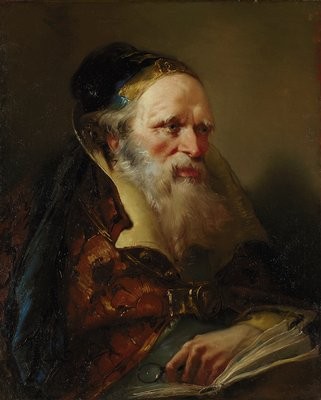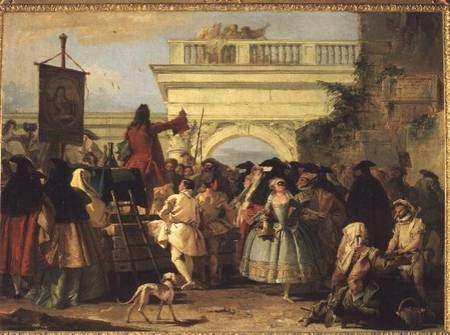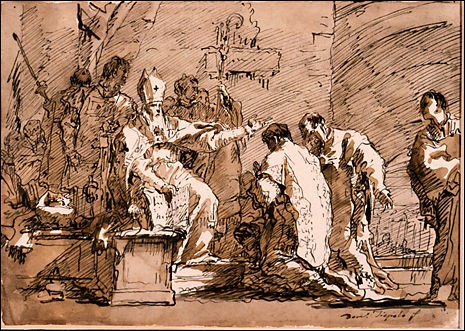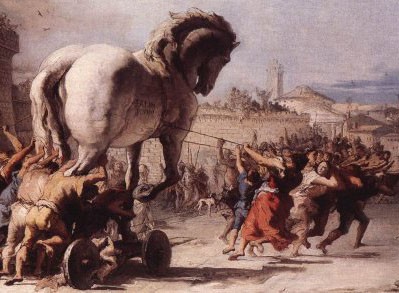Giovanni Domenico Tiepolo (1727-1804)
Get a Giovanni Domenico Tiepolo (1727-1804) Certificate of Authenticity for your painting (COA) for your Giovanni Domenico Tiepolo (1727-1804) drawing.
For all your Giovanni Domenico Tiepolo (1727-1804) artworks you need a Certificate of Authenticity (COA) in order to sell, to insure or to donate for a tax deduction.
Getting a Giovanni Domenico Tiepolo (1727-1804) Certificate of Authenticity (COA) is easy. Just send us photos and dimensions and tell us what you know about the origin or history of your Giovanni Domenico Tiepolo (1727-1804) painting or drawing.
If you want to sell your Giovanni Domenico Tiepolo (1727-1804) painting or drawing use our selling services. We offer Giovanni Domenico Tiepolo (1727-1804) selling help, selling advice, private treaty sales and full brokerage.
We have been authenticating Giovanni Domenico Tiepolo (1727-1804) and issuing certificates of authenticity since 2002. We are recognized Giovanni Domenico Tiepolo (1727-1804) experts and Giovanni Domenico Tiepolo (1727-1804) certified appraisers. We issue COAs and appraisals for all Giovanni Domenico Tiepolo (1727-1804) artworks.
Our Giovanni Domenico Tiepolo (1727-1804) paintings and drawings authentications are accepted and respected worldwide.
Each COA is backed by in-depth research and analysis authentication reports.
The Giovanni Domenico Tiepolo (1727-1804) certificates of authenticity we issue are based on solid, reliable and fully referenced art investigations, authentication research, analytical work and forensic studies.
We are available to examine your Giovanni Domenico Tiepolo (1727-1804) painting or drawing anywhere in the world.
You will generally receive your certificates of authenticity and authentication report within two weeks. Some complicated cases with difficult to research Giovanni Domenico Tiepolo (1727-1804) paintings or drawings take longer.
Our clients include Giovanni Domenico Tiepolo (1727-1804) collectors, investors, tax authorities, insurance adjusters, appraisers, valuers, auctioneers, Federal agencies and many law firms.
We Perform Giovanni Domenico Tiepolo art authentication. Giovanni Domenico Tiepolo appraisal. Giovanni Domenico Tiepolo certificates of authenticity (COA). Giovanni Domenico Tiepolo analysis, research, scientific tests, full art authentications. We will help you sell your Giovanni Domenico Tiepolo or we will sell it for you.

Giovanni Domenico Tiepolo was a painter and printmaker in etching, son of artist Giovanni Battista Tiepolo and elder brother of Lorenzo Baldissera Tiepolo. Domenico was born in Venice, studied under his father, and by the age of 13 was the chief assistant to him. He was one of the many assistants, including Lorenzo, that transferred the designs of his father (executed in the ‘oil sketch’ invented by the same). By the age of 20, he was producing his own work for commissioners.

He assisted his father in Würzburg 1751-3, decorating the famous stairwell fresco, in Vicenza at the Villa Valmarana in 1757, and in Madrid at the palace of Charles III from 1762-70. His painting style developed after the death of his father in 1770, at which time he returned to Venice, and worked here as well as in Genoa and Padua. His painting, though keeping the decorative influence of his father, moved from its spatial fancy and began to take a more realistic depiction. His portraits and scenes of life in Venice are characterized by movement, color, and deliberate composition.

After a lapse of 15 years, his work developed from the religious and mythological subjects of his father, to a more secular style. He produced 104 sketches of Punchinello, the standard character of the commedia dell’arte (which would later become Punch in Punch and Judy), a physically deformed clown. These were created as ‘Entertainments for the Children’, and attempted to poke fun at the pretensions and behavior of the viewer. The same protagonist featured in frescos in his family villa in Venice.

Many of Domenico’s works are drawings with ink wash, and he is a fine draftsman, although weaker than his father. His St. Ambrose Addressing the Young St. Augustine sketch is typical of the commissions he would receive. St. Ambrose, with the crozier and mitre, addresses and gives religious instruction to the beardless Saint Augustine. The composition has the pomp and grandiosity of his father’s work, set out as if part of a theatrical display. He, however, takes 18th century Venice as the setting for this 4th century act, drawing on his experience of the city and his many works depicting life in it. Domenico was also a significant printmaker in etching, often reproducing his own or his father’s paintings. However he produced an original series of twenty illustrations of the Flight into Egypt, and one of the fourteen Stations of the Cross.

Reviews
1,217 global ratings
5 Star
4 Star
3 Star
2 Star
1 Star
Your evaluation is very important to us. Thank you.
